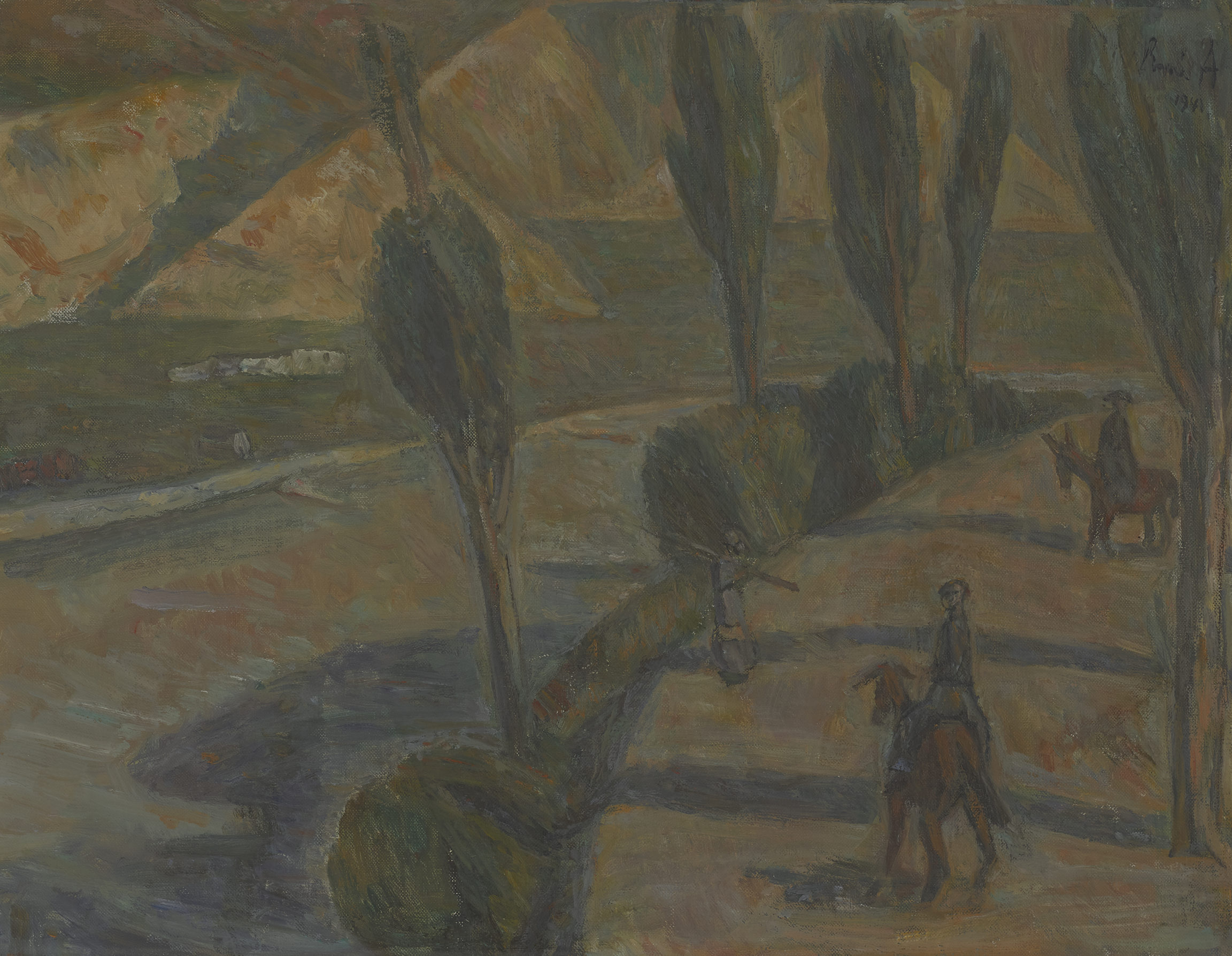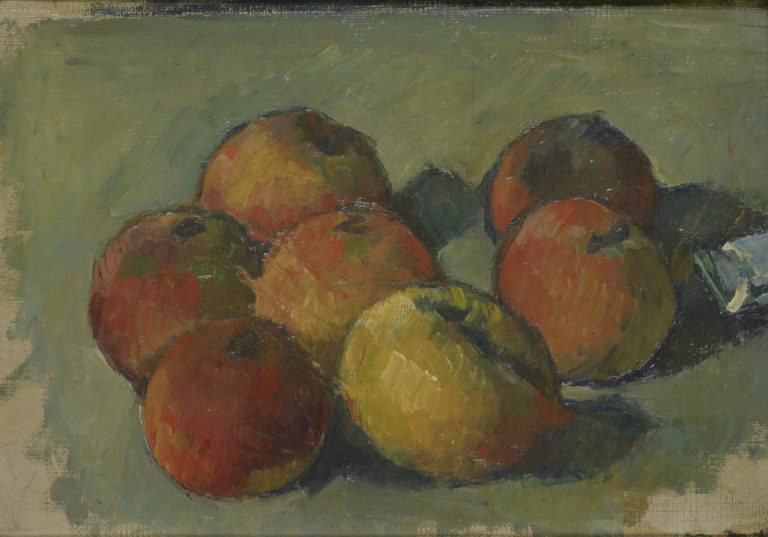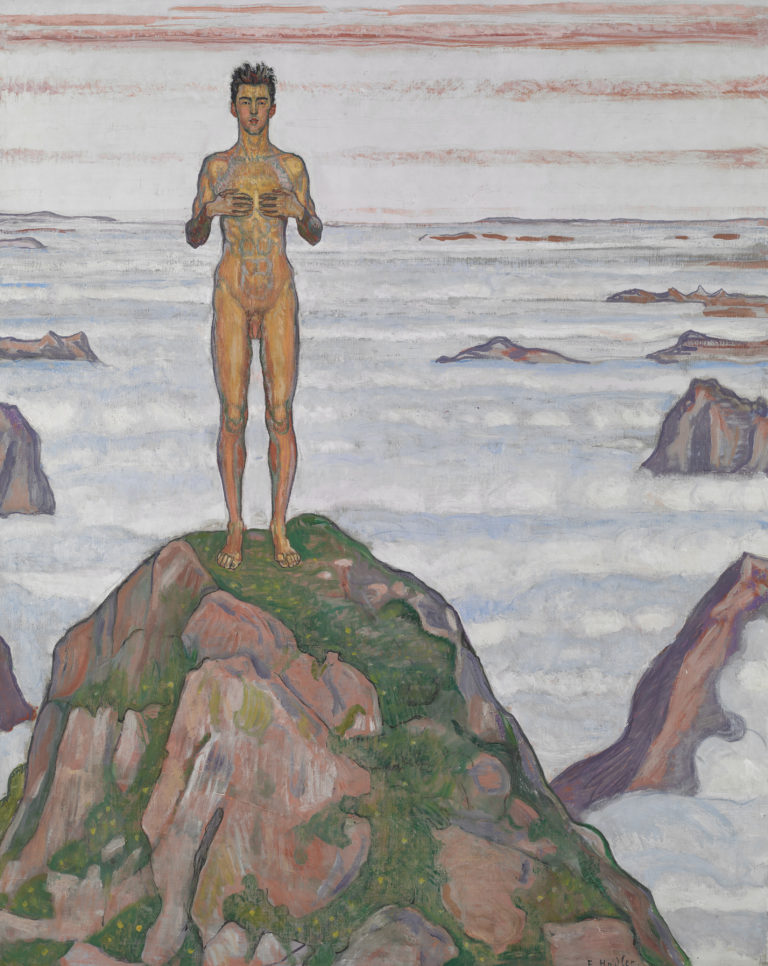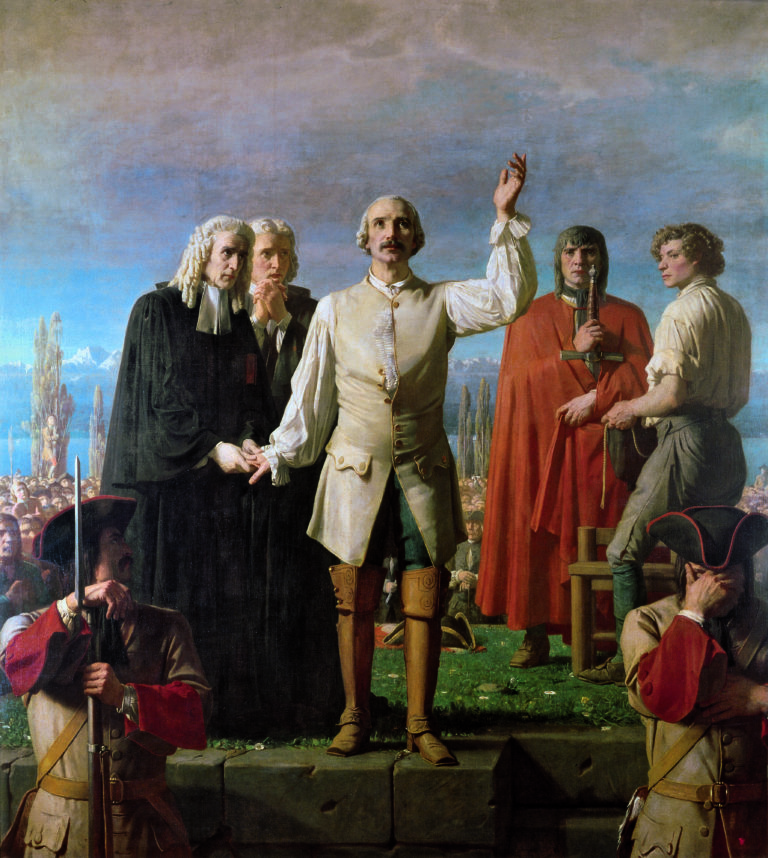Bibliography
Jörg Zutter (ed.), René Auberjonois, exh. cat. Lausanne, Musée cantonal des Beaux-Arts, Genève, Skira, 1994: 30.
Hugo Wagner, René Auberjonois. L’œuvre peint – Das gemalte Werk. Catalogue des huiles, pastels et peintures sous verre, Zurich, Institut suisse pour l’étude de l’art, Denges-Lausanne, Éditions du Verseau, 1987: n. 588.
Guido Fischer et Marianne Muret, Le Valais d’Auberjonois, exh. cat. Martigny, Le Manoir, 1968: n. 10.




René Auberjonois first stayed in the Valais in 1902 and was stunned by the ‘great spectacle of the landscapes’. His life soon acquired a pendulum movement as he alternated between Paris, where he pursued a life in society-followed artistic events, and an exotic elsewhere, which he found in the plain of the Rhône and the hilltop village of Lens. In 1943 his friend, the writer C. F. Ramuz, said that what they both loved about the Valais was the permanence of the unchanging, the simplicity of the way of life and, above all, ‘nature, and what it has made of the men who live there’.
In 1940, Auberjonois was preparing for a solo show at the Kunsthalle in Basel. He had long stays in the Valais, was in Lens in January then in September went to Sion, where he painted a dozen canvases, including this Route valaisanne. The importance to the artist of the bond between men and their environment is what explains the ambiguous status of this view, which is neither a landscape nor a genre scene, but more a kind of ‘chamber landscape’ aiming to overcome what for him was the false distinction between outdoor and indoor painting.
Here, the view over a bank of the Rhône flattens onto the same screen realities that we feel to be consubstantial: the peasants riding their mules and the poplar trees bending down towards the water, their shadows merging and crisscrossing on the path and on the water. The hard sunlight cuts out triangles of light on the foothills of the mountains. Typical of the painter’s late work, the austerity of the very narrow range of colours and the almost caricatural expressive stylisation demonstrate his lack of interest in colour and naturalism. Auberjonois’ formula derives from a formalism concerned mainly with the balance and order of the composition. As a worthy heir of Paul Cézanne, that is where he found his direction, far from the deliquescence of impressionism, and in refusing the path to abstraction opened up by cubism.